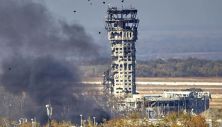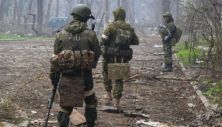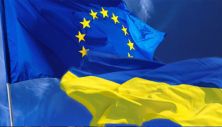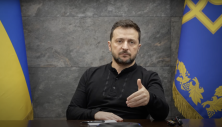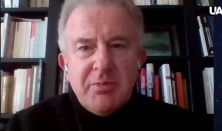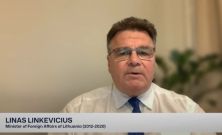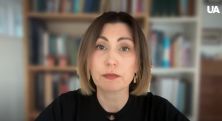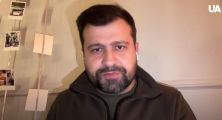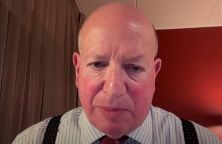How the attitude towards the Crimean Tatars has changed in the occupied Crimea after the start of a full-scale war in Ukraine? What kind of repressions are applied to activists on the peninsula and how much it is possible to protect their rights, at least through a lawyer? What significant changes will occur after the de-occupation of the peninsula? We discuss these topics on the UA TV channel with Tamila Tasheva, permanent representative of the President of Ukraine in the Autonomous Republic of Crimea.
Crimean Tatars have been subjected to repressive pressure from the Russian Federation since 2014. Repressions continue after the full-scale invasion of the Russian Federation into Ukraine. What is now known about the illegally detained Crimeans, where and under what conditions are they being held?
After the start of a full-scale war, it became much more difficult to receive information from the territory of the temporarily occupied Crimean peninsula. But in any case, we are trying to somehow get information, including our own internal communication channels and a network of contacts in Crimea.
There are currently 138 political prisoners, of which 105 are Crimean Tatars. Among them is the first deputy head of the Mejlis, Nariman Dzhilyalov, who was detained a year ago.
The indigenous people of Crimea were persecuted with particular zeal. Why is the Kremlin afraid of the Crimean Tatars?
It’s a long story. The Russian Federation wants to destroy Ukraine, Ukrainians, because it considers it its colony. The policy of the Russian Federation in relation to the Crimea and the Crimean Tatars was just as colonial.
Before the first annexation of the peninsula, which took place in 1783 by Catherine II, when the Crimean Tatar statehood, the Crimean Khanate, was destroyed, 95% of the Crimean Tatars lived on the peninsula.
And so the myths that Sevastopol is a city of Russian sailors, that Crimea has never been Ukrainian and Crimean Tatar, and so on, are all propaganda that Russian historiographers have been writing down for centuries in Ukrainian textbooks and world history.
Read also: Ukraine introduces chemical and radiation alert sirens amid Russia’s nuclear threats
Crimean Tatars, living on their territory, destroy the myth that Crimea is Russian territory. Therefore, they want to destroy the Crimean Tatars to the last.
What are the moods in Crimea now after recent blasts?
Of course, we are monitoring the situation through both open and closed sources. The queue to leave the Crimea is very long. People are afraid of what is happening. For almost 6 months of hostilities, they thought that the war would not affect them, although it had already touched them for a very long time. This is a draft in the Russian army, these are conscripts who have already died during the war. Therefore, there are quite a lot of anti-war sentiments on the territory of the peninsula.
the big war that the Russian Federation unleashed against Ukraine actually provoked the appearance of a whole galaxy of people in Crimea who hate Russia and who began to actively declare this.
What do you think, will the form of autonomy of Crimea be changed after the de-occupation? If yes, what will it be?
In 2021, a number of historic decisions were made for the Crimean Tatars. President Zelensky submitted to the Verkhovna Rada a draft law “On the Indigenous Peoples of Ukraine”, which was adopted. Now we officially have three indigenous peoples in Crimea (Crimean Tatars, Karaites and Krymchaks – ed.), and they have the right to self-determination within the Ukrainian state.
This year we are working on the law “On the status of the Crimean Tatar people”, where a number of norms are specified and a number of opportunities are given to the Crimean Tatars. This includes financing of representative bodies of the Crimean Tatars, and the definition of these bodies, and issues of the use of natural resources, and issues of consultations with representative bodies, and so on. That is, this is an even more in-depth and expanded frame of rights that the Ukrainian state gives to the Crimean Tatars.
Crimea after the de-occupation will definitely look like a territory that is part of Ukraine, of course, with certain rights extended for the Crimean Tatars. All other things are currently being discussed. Either it will be an autonomy in its current status, or it will be an ordinary region, like any other region of Ukraine, or it will be a national-territorial autonomy.
The key thing is that there is a dialogue between representatives of the Mejlis, Kurultay, that is, representative bodies, leaders of the Crimean Tatars and representatives of the Ukrainian state, various state bodies, including the Ministry for Reintegration, the Representation of the President of Ukraine in the Autonomous Republic of Crimea, the Office of the President of Ukraine. We all understand that the reform, of course, needs to be done, but what form it will take is still debatable.
